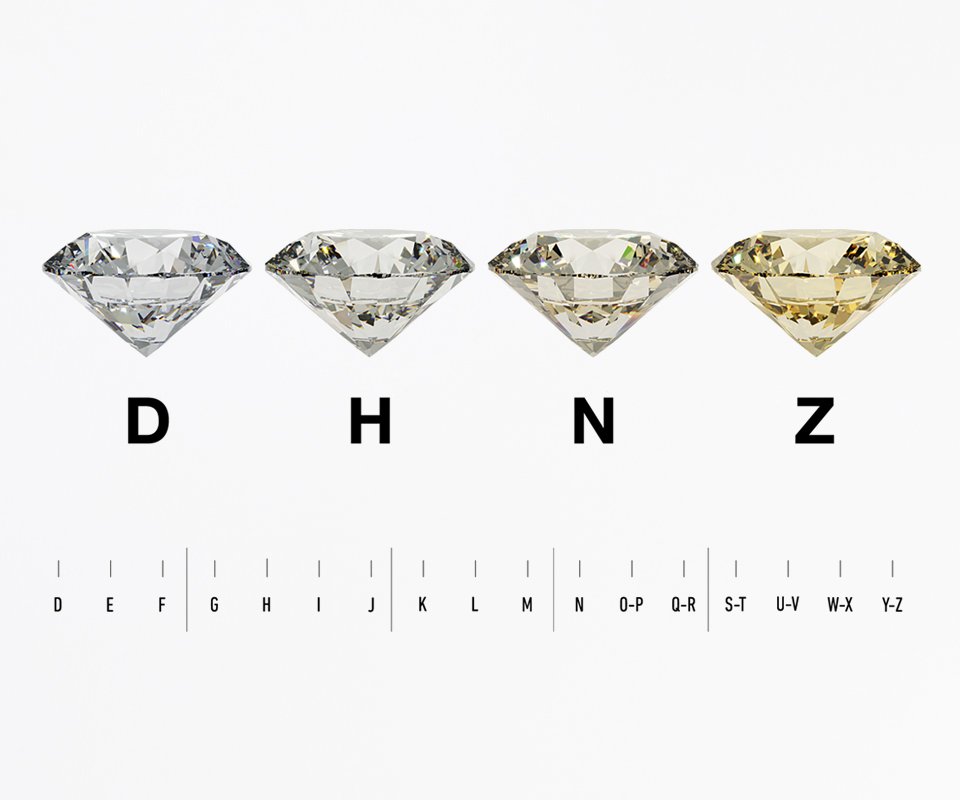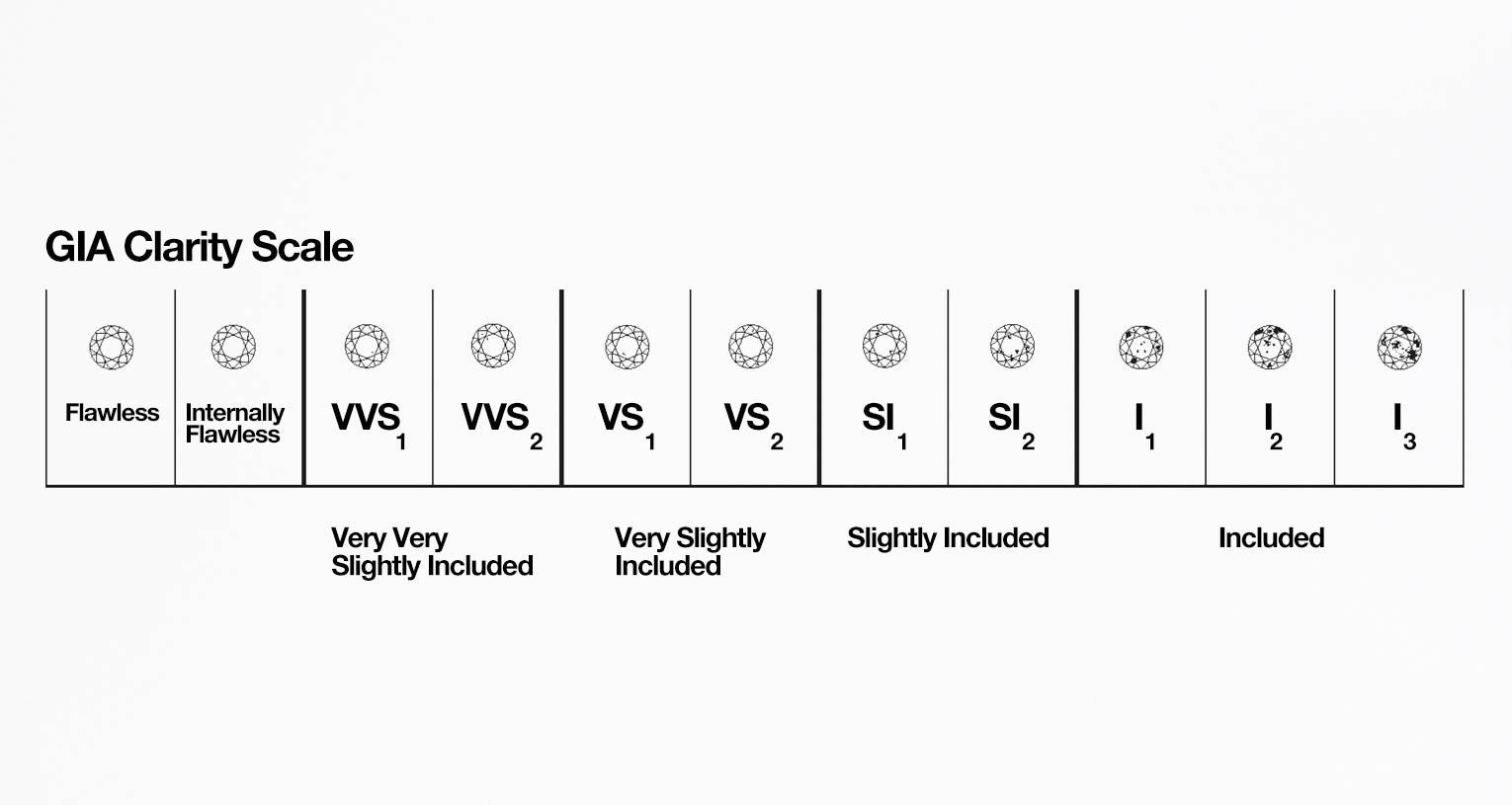
The 4Cs are the defining characteristics of every diamond.
GIA’s diamond grading provides the consistent and unbiased results that the global diamond industry and diamond customers trust.
Without strict standards, the characteristics, quality and value of a diamond would be left open to interpretation.
Choosing a diamond may be a matter of preference, but evaluating a diamond is a matter of precision.
That’s where we come in.
The 4Cs are the global standard.
GIA’s 4Cs transformed the way diamond quality is determined and communicated, forever changing how diamonds are evaluated, bought and sold.
The 4Cs are for everyone. This framework is both a way to better understand your diamond, and to ensure accuracy in the evaluation of your diamond’s unique characteristics.
It is the best way to ensure clear information, uniform practices, scientific grading and transparent evaluation in the global diamond industry. The 4Cs are one of GIA’s many innovative contributions and one we are incredibly proud of because of how many consumers it continues to help.
With the strictest dedication to these standards, we deliver objective, consistent diamond grading results at all our laboratories around the world. While our language has been adopted worldwide, the only way to ensure you are receiving the strictest application of these standards is through the proprietary equipment and tried and tested procedures of an official GIA laboratory.
Diamond Color
When most people imagine a diamond, they picture one with little to no hue. Often when we talk about diamond color, we are actually talking about the absence of color.
As subtle as color distinction may be, color variations from the most obvious to subdued can drastically alter diamond quality and price.
Diamonds actually come in a variety of hues, from colorless to yellow, gray, brown and nearly every shade of the rainbow. Luckily, diamond color isn’t a matter of opinion. Proper color evaluation is a matter of expertise.
The correct way to evaluate diamond color is in precise conditions, under controlled lighting, where stones are compared to masterstones with established color grades.
Once properly evaluated, color is documented based on the GIA D-to-Z Color Scale. From D for colorless to Z for light.
The GIA D-to-Z Color Scale.
Color is relative. And before we created a universal grading scale, so was the language that surrounded diamond color. From letters, to numbers, Roman numerals, and even terms like “blue white” were used, causing misunderstanding, misinterpretations, and in some cases, misrepresentations of diamond color.
Today, the D-to-Z diamond color scale as followed by the GIA laboratory is regarded globally as the universal standard for color grading.
Diamond Clarity.
Diamonds originate roughly 140–190 km below Earth’s surface, where carbon endures pressures of 4.5–6 GPa and temperatures exceeding 950 °C, creating the perfect environment for crystal growth. During this intense formation process, microscopic mineral crystals and stress-induced fractures can become trapped, producing internal “inclusions” and surface-reaching “blemishes” that serve as each diamond’s unique fingerprint.
Clarity grading follows the GIA International Diamond Grading System™, which considers five factors—size, number, position, nature, and color or relief of clarity characteristics—to assign a grade from Flawless (FL) to Included (I3) . These evaluations are performed under standard 10× magnification, ensuring even minute features are accurately recorded; such precision is essential since inclusions can influence a diamond’s brilliance and structural integrity.
Practical clarity considerations often lead buyers to choose “eye-clean” grades such as VS2 or SI1, where inclusions exist but remain invisible to the naked eye, striking a balance between visual purity and budget. While surface blemishes may be polished away, internal inclusions are permanent—making an understanding of their characteristics crucial for both accurate appraisal and long-term durability
The GIA International Diamond Grading System™
The GIA Diamond Clarity Scale is the global language for diamond clarity grading. Wherever you go in the world, whatever language is spoken, when buying a diamond, today you will likely hear terms like VVS1 or SI2 used to describe clarity.
Every diamond is evaluated under 10x magnification and assigned a clarity grade. A flawless diamond would receive an (FL) clarity grade; a diamond with obvious inclusions might receive a clarity grade of I3. Diamond clarity grades are based on the number, size, relief, nature, and location of characteristics. The clarity rating of a diamond is a reflection of the overall appearance of the stone – although many of these characteristics will likely not be visible to the naked eye.
Every diamond is truly unique, however most diamonds you see in jewelry stores fall between VS (very slightly included) and the SI (slightly included) on the clarity grading scale.
1 Universal System. 11 Grades.
All under 10x magnification
Flawless (FL) – No inclusions and no blemishes visible.
Internally Flawless (IF) – No inclusions visible but does have blemishes.
Very, Very Slightly Included (VVS1 and VVS2) – Inclusions so slight they are difficult for a skilled grader.
Very Slightly Included (VS1 and VS2) – Inclusions are observed with effort but can be characterized as minor.
Slightly Included (SI1 and SI2) – Inclusions are noticeable.
Included (I1, I2, and I3) – Inclusions are obvious which may affect transparency, brilliance and durability.
Diamond Cut.
The cut of a diamond is a question of craftsmanship.
When you hear words like Brightness, Scintillation and Fire, they describe how masterfully a diamond is cut.
A diamond’s cut refers to how it interacts with light.
While a term like oval would refer to the shape, or outline of a diamond, cut also describes the overall design of a diamond, including the arrangement and proportions of the diamond’s facets.
Diamond cut grades are only given to round brilliant cut diamonds because they are the only cut that have standardized facets.
All other shapes are referred to as fancy shapes, which includes marquise, emerald, pear, oval, hearts and even triangles.
Proportions impact the face-up appearance, allure and attractiveness of diamonds. There are many components to consider when assessing the overall cut quality of a round brilliant diamond, one of which is the individual’s preference. Each grade range represents a range of proportion sets, so there is plenty of room for personal preference within a preferred grade range.
There is a nearly unlimited combination of proportions possible, and all of them impact the interaction with light, and ultimately how attractive the diamond appears.
GIA's diamond cut grading system.
Assessing the major components of a diamond, as well as its ability to interact with light, the Diamond Cut Grading System provides a standard system for consistently evaluating and documenting the cut quality of a standard round brilliant diamond from Excellent to Poor. This allows both gem and jewelry professionals and customers to make informed decisions when purchasing or selling a standard round brilliant diamond.
The major components of a standard round brilliant, from top to bottom, are crown, girdle and pavilion. Every round brilliant cut diamond has 57 or 58 facets, the 58th being a tiny flat facet at the bottom of the pavilion that’s known as the culet. The large, flat facet on the top is the table.
Standard round brilliant cut diamonds in the D-to-Z color range are assessed by their face-up appearance, design and craftsmanship.
Diamond Carat Weight.
Carat measures weight, not size. A metric carat is defined as 200 milligrams. Each carat is subdivided into 100 points, allowing for measurement to the hundredth decimal place. Carat weight can be measured to the thousandth decimal place for rounding purposes.
The term carat weight comes from carob seeds and has been in use since the 1500s. Early gem traders used to use small uniform seeds to counterweight their scales. Today a carat is a standard milligram measurement of weight, recognized and used globally.
Certain carat weights are considered to be magic sizes for their desirability – 1.00 carat, 1.50 carats, and 2.00 carats. Although it is difficult to visually distinguish a 0.99 carat diamond from a 1.00 carat, the price difference can be significant.
Understanding the weight of your diamond purchase.
When shopping for a diamond, you may hear a jeweler refer to a diamond’s weight in points, calling a diamond that weighs 0.25 carats a “twenty-five pointer.” Diamonds that weigh more than one carat, like a 1.08 carat stone will be referred to in carats and decimals, for example “one point oh eight carats.”
If two diamonds were identical in color, clarity, and cut, but one had a larger carat weight, then that diamond would be more rare and the price would likely increase accordingly. However, bigger isn’t always better because two diamonds of the same carat weight aren’t necessarily equal. It is essential to have the color, clarity and cut of a diamond evaluated as well. Remember, the value and quality of a diamond reflects all 4Cs and not just carat weight.








